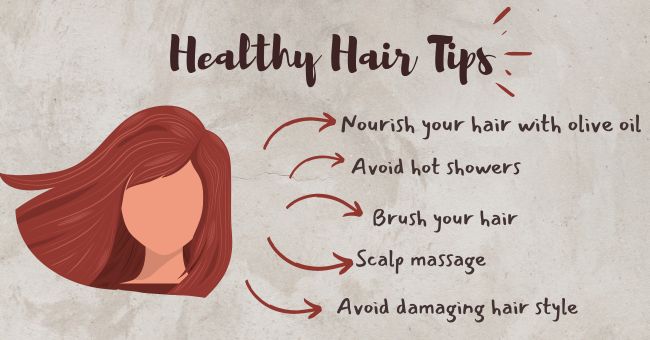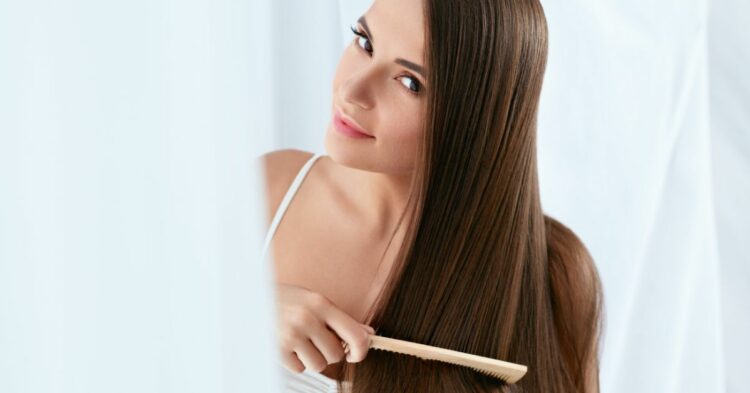A well-rounded hair care routine plays a vital role in our quest for healthy and luscious hair. A proper hair care regimen helps maintain the health and appearance of our hair and protects it from damage caused by environmental factors, styling tools, and chemical treatments.
However, with the overwhelming number of products and techniques available, it can be challenging to determine the best approach. In this article, we will guide you through the essential steps of a successful hair care routine, covering cleansing, conditioning, protecting, and styling, to help you achieve the hair of your dreams.

Cleansing: Choosing the Right Shampoo
1. Determining Hair Type:
Understanding your hair type is crucial when selecting a suitable shampoo. Whether your hair is oily, dry, normal, or chemically treated, there are specific formulations tailored to address each type’s unique needs.
2. Frequency of Washing:
How often you should wash your hair depends on factors like hair type, lifestyle, and scalp condition. While some individuals may benefit from daily washing, others with dry or curly hair might find that washing less frequently helps maintain moisture levels.
3. Shampooing Techniques:
Proper shampooing techniques, such as using lukewarm water, massaging the scalp gently, and rinsing thoroughly, can optimize the cleansing process while preventing excessive stripping of natural oils.
Conditioning: Nourishing and Hydrating
1. The Importance of Conditioning:
Conditioning is vital to replenish moisture, add softness, and enhance manageability. It helps repair damaged strands, reduces frizz, and promotes overall hair health.
2. Choosing the Right Conditioner:
Tips for Choosing the Right Conditioner:
- Determine your hair type.
- Consider your specific hair concerns.
- Read the labels and ingredients.
- Choose the right consistency for your hair.
- Look for additional benefits like color or heat protection.
- Check for compatibility with other hair products.
- Consider your scent preferences.
- Read reviews and seek recommendations.
- Test small samples before committing.
- Be open to experimenting until you find the perfect conditioner.
3. Application Techniques:
Applying conditioner correctly involves focusing on the ends and lengths, avoiding the scalp, and leaving it on for the recommended time. Detangling with a wide-toothed comb during the conditioning process can minimize breakage.
Protecting: Shielding from Damage
1. Heat Protection:
Before using hot styling tools like curling irons or straighteners, applying a heat protectant spray can help minimize heat damage and maintain hair integrity.
2. UV Protection:
Prolonged sun exposure can lead to hair dryness and color fading. Utilize UV-protecting sprays, leave-in conditioners, or wear hats to shield your hair from harmful UV rays.
3. Avoiding Overstyling:
Excessive use of styling tools, tight hairstyles, and chemical treatments can weaken hair, causing breakage and split ends. opt for gentle styling techniques and allow your hair regular breaks to recover.
Styling: Achieving Desired Looks
1. Brushing and Combing:
Brushing and combing are essential steps in any hair care routine. They not only help in detangling your hair but also promote blood circulation in the scalp, distribute natural oils, and give your hair a polished appearance. However, improper brushing or combing techniques can lead to hair breakage, split ends, and unnecessary damage.
2. Hairstyling Products:
Hairstyling products are essential for achieving various hairstyles, enhancing the look and texture of your hair, and adding the finishing touches to your overall hair care routine. From adding volume and shine to taming frizz and holding styles in place, the right hairstyling products can help you achieve your desired look.
3. Overnight Care:
Overnight care for your hair is often overlooked but can significantly affect its health, appearance, and manageability. You can wake up to nourished, hydrated, and more manageable hair by incorporating a few simple steps into your nighttime routine.
4. Overnight Hair Care Tips:
- Avoid tight hairstyles.
- Use a silk or satin pillowcase.
- Consider protective styles.
- Apply an overnight leave-in conditioner or hair oil.
- Minimize friction between hair and pillowcase.
- Gently detangle hair in the morning.
- Use water and gel or leave-in conditioner spray to refresh hair.
- Protect hair with silk or satin accessories or coverings.
- Choose a suitable overnight care routine based on hair type.
- Prioritize maintaining moisture and minimizing breakage while you sleep.
Conclusion
A consistent and personalized hair care routine can significantly contribute to your hair’s health, strength, and beauty. Finding the right products and techniques for your specific hair type and concerns is essential. Regular cleansing, proper conditioning, protection from damage, and mindful styling are the building blocks of a successful hair care regimen.
By investing time and effort into understanding your hair’s needs and incorporating these practices into your daily routine, you can achieve the luscious locks you’ve always desired. So, start prioritizing your hair care today and witness the transformation of your hair from dull and lifeless to vibrant and radiant.
Frequently Asked Questions!!
1. What is the best conditioner for dry hair?”
Answer: The best conditioner for dry hair would typically be a moisturizing or hydrating conditioner. Look for ingredients like shea butter, argan oil, or glycerin, which help nourish and replenish moisture in the hair. It’s also beneficial to choose a conditioner specifically formulated for dry or damaged hair.
2. “How often should I use conditioner?”
Answer: The frequency of conditioner usage depends on your hair type and needs. In general, it is recommended to use conditioner every time you shampoo your hair. However, if you have fine or oily hair, you may choose to condition every other wash or use a lighter conditioner to avoid weighing down your hair.
3. “Can I use conditioner without shampooing?”
Answer: Yes, you can use conditioner without shampooing, especially if your hair doesn’t feel excessively dirty or oily. This is commonly known as co-washing or conditioner-only washing. It helps to maintain moisture in the hair while gently cleansing it. However, occasional shampooing is still recommended to remove product buildup and keep the scalp clean.
4. “What is the difference between conditioner and deep conditioner?”
Answer: The main difference between conditioners and deep conditioner lies in their formulation and intended purpose. Regular conditioners are designed to provide daily moisture and detangling benefits, while deep conditioners are more intense treatments that penetrate the hair shaft to repair and nourish it on a deeper level. Deep conditioners are usually used less frequently, typically once a week or as needed.
5. “Should I use conditioner on my scalp?”
Answer: It is generally recommended to focus the application of conditioner on the lengths and ends of the hair rather than the scalp. Conditioners are formulated to moisturize and detangle the hair, and applying them directly to the scalp may lead to greasiness or weigh down the roots. However, if you have a dry scalp or specific scalp concerns, you can use a lightweight conditioner or a scalp-specific treatment as needed.
6. “Can conditioner make my hair greasy?”
Answer: Using too much conditioner or applying it directly to the roots and scalp can contribute to greasiness. It’s important to apply conditioner mainly to the lengths and ends of the hair, avoiding the scalp. Additionally, rinse the conditioner thoroughly to ensure no residue is left behind.


